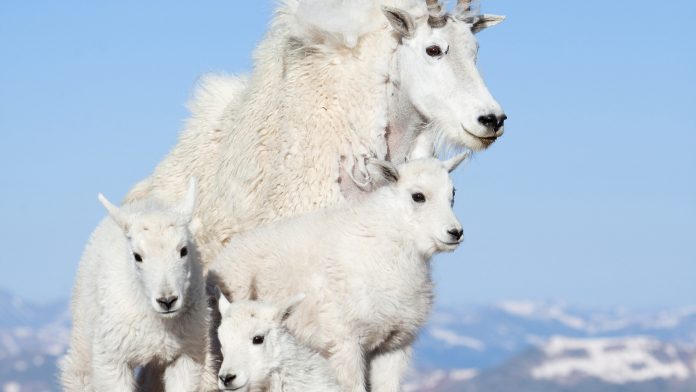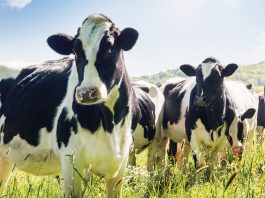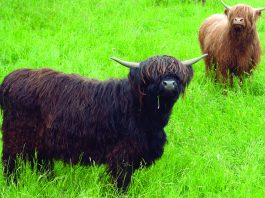Coralie Danchin from the European Regional Focal Point for Animal Genetic Resources discusses some of the reasons why obtaining animal genetic resources is important.
The European Regional Focal Point for Animal Genetic Resources (EFRP) is the regional platform for the support of management, conservation, and sustainable use of animal genetic resources. And given the importance of animal genetic resources in the challenge to feed a growing population with less land and less resources, the EFRP has an increasingly important role to play.
The Innovation Platform spoke to the EFRP’s Coralie Danchin about how the EFRP operates and some of the challenges involved in managing and sharing information and knowledge.
Could you begin by outlining the work and role of the EFRP?
The EFRP is the regional platform to support the in situ and ex situ conservation and sustainable use of animal genetic resources and to facilitate the implementation of FAO’s Global Plan of Action for Animal Genetic Resources (AnGR) in Europe. It is essentially a network, and one of the ideas behind it is to help European countries – not just EU countries – exchange information about AnGR and help to facilitate the implementation of FAO’s Global Plan of Action for AnGR.
To do so, we went on to establish Working Groups, which are created on a permanent basis to work on long-term tasks. We currently have Working Groups are operating on:
- Ex situ conservation (cryo-conservation);
- Documentation and Information; and
- In situ conservation and valorisation of Animal Genetic Resources.
In addition, we are also a part of a project called GenResBridge to improve and link the pre-existing secretariats on plant (ECPGR), forest (EUFORGEN), and animal genetic resources (ERFP), and build a common strategy on genetic resources.
According to the FAO, ‘There remains a large knowledge gap regarding the current roles of specific breeds, and whether they have characteristics that make them especially suited to particular functions or production conditions. There is [thus] a need for more complete data to be collected and made available through existing information systems.’ Would you agree with that? Is that indeed a particular challenge?
Yes, I do indeed agree, but there are essentially two issues here. The first is the fact in a lot of cases there is information and knowledge at the level of the individual country, but that information is not being shared and made available at FAO level. For instance, in France we have a national database where we store the information on many (though not all) domestic breeds, including their phenotypes etc. However, that is only at the French level, and so the first step would be to share this at the FAO level, which is still in progress. Indeed, the FAO has been working to develop a new database that is more user friendly, and so this should become easier to moving forwards.
The second issue here is that there are still breeds that have influence at farming level but are at relatively low numbers, and we are still missing a lot of knowledge about them. There are, however, several EU-funded projects taking place at the moment which could go some way to filling this gap by characterising some of these local breeds. For instance, one such Call is currently looking at the Mediterranean area and trying to find characterisation of local breeds. These projects are a great opportunity, but, of course, the problem is that not all countries can be a part of them.
Furthermore, many such projects – whether funded by the EU or at the national level – are typically active for around three years, after which time they end and something new takes their place. This is not what we need. Rather, we require initiatives which are on-going with no pre-determined timeframe. While such a project would not necessarily be groundbreakingly innovative in terms of the way it would be carried out, it would help us to characterise the breeds that we are currently missing, which is important.
There is the argument that genetic resources of native animals should be conserved and managed by the countries. Would you agree with this, and is there enough capacity in individual countries to ensure that this data can be collected and utilised?
There are two issues here, too – the management and the data, which are different things. In France, there are several rare cattle breeds (for many years, there were less than 200 cows for each breed) and while we have the data on things like their location, we are still missing the information on their gene characterisation etc. But we nevertheless manage them, and we have genetic programmes for them.
It could also depend, at least in Europe, about what awareness each Member State has about its local breeds. That awareness is growing now, but one of the issues we have experienced, particularly with some Eastern European countries, is that because they were eager to join the EU they wanted to do the same as what the other EU countries were doing, and that involved them trying to get rid of their local breeds and replace them with the ones already existing in Europe. Yet, at the same time, they were also being told that they needed to be keep their local breeds. There were thus mixed messages for these countries at this time, and it is now in those countries where it is most difficult to have a programme and to have farmers that still believe in their local breeds.
The UN FAO also holds that decision-making in the field of AnGR management is often characterised by a lack of attention to multiple functions, particularly non-marketed outputs and benefits that are difficult to quantify. In these circumstances there is a danger that the value of local multifunctional breeds is underestimated, and that only a partial picture of livestock’s contribution to human well-being is obtained. Would you agree with this and, if so, how could it be rectified?
Yes, I completely agree with this, and one of the issues here is that genetic resources are a part of biodiversity, but biodiversity is impacted by human activity, such as farming. Therefore, AnGR are often forgotten as being part of biodiversity and as having other functions than food production. Indeed, farming has had an extreme influence on how landscapes are shaped, so much so that in Europe none of the landscapes we can see today are natural, and they haven’t been natural for centuries, maybe even thousands of years; it has been created by livestock and human activities.
There are many quarters who argue against livestock farming in favour of plant-based diets for people. And yet that fails to take into account the fact that there are many places where the only thing that can be farmed is animals, as crops won’t grow there – these include mountainous areas, the Mediterranean region, and so on. In such locations, it is impossible to raise crops and so the only way to get protein is to farm animals which will graze on the vegetation that does manage to grow but which is of no use for humans as a foodstuff. The way livestock shape these areas is extremely important by decreasing the risk of fire (Mediterranean region) and leaving open areas which is favourable to wild biodiversity.
It is important, then, that we show the positive value of livestock. But that has been increasingly difficult amongst the voices which oppose livestock farming, particularly with the rise of things like veganism in many Western European countries.
Associations have been made between animal genetic resources and climate change issues. How would you like to see this being further addressed/highlighted?
This is also an important area, and can be linked back to the earlier discussion around our knowledge of certain breeds. Of course, we know that many breeds of sheep or goats are able to survive in very harsh environment, and so it may well be possible for them to adapt to new conditions as the climate changes. Indeed, there are numerous hardy breeds which can do this, and while they currently tend to be local breeds, there is the chance that in the future they will no longer be the minority breeds because they will be the only ones that are able to survive.
Yet, we don’t always know why these breeds are able to survive in harsh environments and thus we lack knowledge on how we could introduce them to different countries should the climate change to the extent that they are no longer suited to their typical habitat, and so AnGR is extremely important.
As such, as a part of our work with local breeds we attempt to explore their link with their environment – and this also goes back to our previous discussion around how livestock shapes the landscape. When and if the climate continues to change, locations which are currently well-suited to the grazing of dairy cows may become more arid, while the environment further north, which used to be too cold or otherwise ill-suited, becomes more hospitable, and so this breed will need to be relocated in order for it to survive. It is therefore crucial that we gain a better understanding of more local breeds so that we can better understand which breeds might be at risk and also which breeds might be able to adapt.
Coralie Danchin
European Regional Focal Point for Animal Genetic Resources (EFRP)
+33 1 40 04 53 14
Coralie.Danchin@idele.fr
www.animalgeneticresources.net
Please note, this article will also appear in the second edition of our new quarterly publication.









